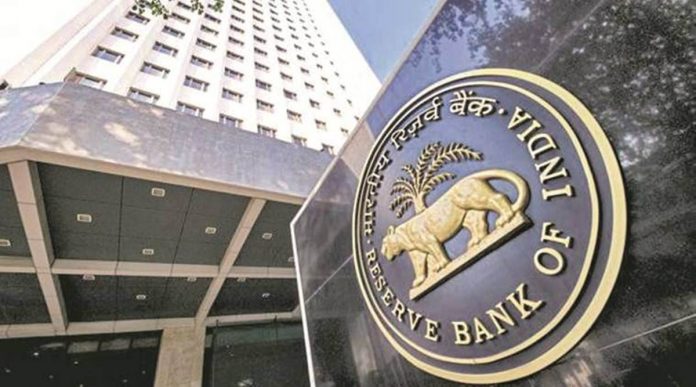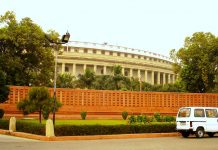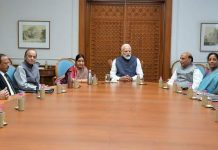This article is written by Prateek Singh from the Institute of Law, Nirma University, Ahmedabad. This article talks about fiscal measures of the Union Government and the challenges to it.
Table of Contents
Introduction
Before 1929, before the great depression occurred in the world, the governments did not use to interfere in the working of the markets. Everything was left to the forces of demand and supply to manage on its own. However, after the great depression, it was considered expedient by the government to interfere in the market in order to get the desired direction, goals for the country. Fiscal policy concerns increasing tax revenues and incurring government expenditures. The Government framed a policy called budgetary policy or fiscal policy to generate revenue and incur expenditure.
Fiscal policy means the Government’s use of taxation, public borrowing, and public spending for ‘stabilization’ or ‘development’ purposes. Following the great depression of 1929, the use of monetary policy to encourage economic growth has grown insignificant. Fiscal policy in underdeveloped countries plays a dynamic part. In fact, extensive use of fiscal policy is indispensable for economic development. In the words of R. Nurkse, “Fiscal policy assumes a new significance in the face of the problem of capital formation in under-developed countries”. The per capita income and savings are extremely low in such countries. The few rich indulge in conspicuous consumption. A considerable portion of savings is dissipated in unproductive channels—in real estates, hoardings, jewellery, gold, speculation, etc. Fiscal policy diverts all these into productive channels.
It was stated by the UN Report on Taxes and Fiscal Policy, it says, “Fiscal policy is assigned the central task of wrestling from the pitifully low output of underdeveloped countries sufficient savings to finance economic development programmes and to set the stage for more vigorous public investment activity.”
In an underdeveloped country where monetary policy alone is ineffective due to the existence of underdeveloped money and capital markets, fiscal policy can be used as an important adjunct to monetary policy in accelerating the rate of capital formation. This makes it important to study fiscal policy.
Objectives of fiscal policy
Full employment
In a developing economy, the principal and the principal goal of monetary policy is to achieve and sustain full employment in an economy. Even if full employment is not reached in these countries, the main goal is to prevent unemployment and attain a state of near full employment. Therefore, in order to minimize unemployment and underemployment, the state should spend enough on social and economic overtaking.
Various investments can also be encouraged through tax holidays, concessions, cheap loans, subsidies, etc. Attempts can be made in rural areas to promote domestic industries by providing them with training, cheap finance, equipment, and marketing facilities. Expenditure on both of these steps would help reduce joblessness and underemployment.
Price stability
It is widely accepted that economic growth and prosperity are rising goals for underdeveloped countries. Economic insecurity in a developed world manifests itself in the form of inflation. Prof. Nurkse believed that “inflationary pressures are inherent in the investment process, but not stopping investment is the way to stop them. They can be regulated by different ways in which the chief is a powerful method of fiscal policy.”
Hence, inflation is a prevalent phenomenon in developed economies where due to the increasing rise in public spending, there is a tendency to price increase. The aggregate demand exceeds aggregate supply due to the increasing sales. Capital goods and consumer products fail to keep up with rising revenues. In short, fiscal measures, as well as monetary measures, go hand in hand to achieve economic growth and stability goals.
To accelerate the rate of economic growth
In a developing economy, fiscal policy will primarily aim at achieving an accelerated rate of economic growth. But without economic stability, it is difficult to achieve and maintain a high rate of economic growth. Fiscal policies such as taxation, public borrowing and funding of deficits, etc. should also be used appropriately, so as not to negatively affect production, consumption, and distribution It should support the economy as a whole which in effect helps to raise national output and per capita income.
Optimum allocation of resources
The distribution of capital in different industries and sectors can be significantly influenced by fiscal policies such as taxes and public spending programmes. As it is real, underdeveloped countries have very low national income and per capita income. The government will drive the growth of social infrastructure through fiscal measures to gear the economy. Public spending, subsidies, and incentives can favourably influence resource allocation in the channels desired.
Tax exemptions and tax concessions can be of great help in attracting resources to favourite industries. On the contrary, high taxes in a particular sector will pull capital away. Above all, direct consumer curtailment and socially unproductive investment can be helpful in resource mobilization and further checking of economic inflationary trends. Often, the security policy is a useful tool in an underdeveloped country for the development of some socially desirable industries.
Prof. R.N. Tripathi suggests the following steps to raise the saving ratio which provides the required finance for developmental schemes:
(i) Direct physical control.
(ii) Increasing the rate of existing taxes.
(iii) Introduction of new taxes,
(iv) Public borrowing of non-inflationary nature,
(v) Surplus from public enterprises,
(vi) Deficit financing.
Equitable distribution of income and wealth
The value of the equal distribution of income and resources in a rising economy is needless to emphasize. In general, wealth inequality persists in countries such as those which concentrate in a few hands at the early stages of growth. It’s also because private ownership is dominant over the entire economic system. Furthermore, severe inequalities generate political and social unrest which creates more economic instability. For this, the government’s effective fiscal policy can be formulated to bridge the difference between the incomes of the different parts of society.
The government should invest in those productive channels that benefit low-income groups and are helpful in increasing their productivity and technology in order to reduce inequalities and do distributive justice. Redistributive expenditure should, therefore, help economic development, and redistribution should also help economic development.
Thus, a well-planned fiscal policy, public expenditure will assist in the growth of human capital which in turn has positive effects on the distribution of income. This can also reduce regional inequalities by offering opportunities for disadvantaged areas. Redistributive tax policy should be strongly egalitarian and aim at imposing heavy taxes on the wealthier sections of the population and exempting the poorer sections. Similarly, luxury items which the higher section consumes may be subject to heavy taxation.
Economic stability
Fiscal policies, to a greater degree, foster economic stability in the face of international cyclical short-run fluctuations. Such fluctuations trigger trade differences, making the developed the most favourable and the emerging economies unfavourable. Thus, in order to introduce economic stability, fiscal strategies should integrate built-in flexibility into the budgetary structure, such that government revenue and expenditure will automatically have a compensatory impact on the nation’s income rise or fall.
Fiscal policy, therefore, plays a leading role in preserving economic stability in the face of internal and external forces. A strategy, popularly known as ‘tariff policy’ rather than aggregate fiscal policy, corrects the uncertainty created by outside powers. Export and import duties will be levied during the boom period, in order to reduce the effect of international cyclical fluctuations.
Heavy import duties on consumer goods and restrictions on luxury imports are essential to curb the use of additional purchasing power. The Government will implement public works projects by deficit spending during the time of recession. In short, fiscal policy should be viewed from a wider perspective, bearing in mind the balanced development of different economic sectors.
Capital formation and growth
Capital takes centre stage in any development project in a country and fiscal policy can be embraced as a key tool for fostering the highest rate of capital creation possible. There is a ‘vicious circle of poverty’ in a newly developing economy. Therefore, balanced growth is needed to break down the vicious circle which is only feasible with a higher rate of capital formation. Once a country comes out of the clutches of backwardness, it stimulates investment and encourages capital formation.
Prof. Raja J. Chelliah recommends that fiscal policy must aim at the following for attaining rapid economic growth:
(i) Raising the ratio of saving (s) to Income (y) by controlling consumption (c);
(ii) Raising the rate of investment:
(iii) Encouraging the flow of spending in a productive way;
(iv) Reducing glaring inequalities of income and wealth.
Fiscal policy must, therefore, be structured to be carried out in two ways-by increasing investment in public and private businesses and by diverting capital from socially less desirable to more favourable avenues of investment.
This policy will help raise the level of aggregate economy savings and create capital to achieve qualitative improvement in the economy. However, capital formation can also be facilitated by taxation, spending on deficits and borrowing from outside. In reality, government fiscal policies will encourage private entrepreneurs to take an active part in mobilizing capital in the long run at least.
To encourage investment
Fiscal policy aims at increasing the pace of investment in both the economy’s public and private sectors. Firstly, fiscal policy will stimulate public sector investment, which in effect would increase the level of private-sector investment. In other words, fiscal policy should be geared towards accelerated economic growth and should promote investment in certain platforms that are deemed most attractive from a social point of view.
These will aim to curb the conspicuous consumption and unproductive investment sources. In the early stages of economic growth, the government will aim to build up overhead economic and social costs such as transportation and communication, irrigation, flood control, electricity, ports, technical training, education, hospital and school facilities, in order to provide external economies to encourage investment in the industrial and agricultural sectors of the economy.
Such markets would be helpful in expanding the size of the economy, rising production costs and increasing investment’s socially marginal efficiency. It should be recalled here that social marginal efficiency initiatives should be carefully chosen in light of their real consequences.
Instruments of fiscal policy
There are Three instruments of fiscal policy they are-
- Public Revenue: Government funds which are used to finance its spending are called public revenue. The key sources of revenue are taxes, fees, fines etc:
- Public Expenditure: The amount that the government spends to maintain the country welfare of the citizens:
- Public Debt: These are the borrowings. It is made by the government when it is unable to meet its expenditure with current revenue:
Challenges
There are two instruments the government has to enforce its economic strategy, namely taxes and government spending. If the economy is in recession, the government can either decide to increase aggregate demand, or lower taxes to stimulate the economy and increase aggregate demand. Similarly, if the economy experiences an inflationary economic boom, it can slash spending or increase taxes.
The discretionary fiscal policy is called when the government takes specific actions to influence aggregate demand. The discretionary fiscal policy isn’t always working as the government intends. There are many reasons why a fiscal policy may not be as effective as desired, or even contra-productive at times. Below are some of the reasons discussed :
- If the government depends on unreliable data, instead, in the first place, it will definitely make the wrong policy decisions.
- Implementation of a policy decision and/or the effect of a policy decision may lag behind. For example, when politicians understand the issue and agree to do something, it could be too late already (recognition lag and action lag). Once a policy is implemented by the government, there may be a time lag until the policy affects the economy (lag in the impact).
- An expansionary fiscal policy may eventually decrease aggregate demand due to crowding-out impact. Increased government borrowing leads to higher interest rates, leading to a fall in aggregate demand.
- Instead of resource shortages the economy may be sluggish rather than lower demand. Fiscal policy will not help in this case (in fact it may increase inflation).
Conclusion
Fiscal policy also impacts production, employment, output and income in the economy. The government raises its spending or/and reduces taxes for expansionary fiscal policy. That makes the curve shift to the right. The government is pursuing a contractionary fiscal policy by cutting their spending or/and increasing taxes.
References
- https://www.economicsdiscussion.net/fiscal-policy/top-8-objectives-of-fiscal-policy/4694
- https://financetrain.com/challenges-in-implementing-fiscal-policy/
- https://idoc.pub/documents/new-catalogue-of-bookspdf-ylyxexwddvnm
LawSikho has created a telegram group for exchanging legal knowledge, referrals and various opportunities. You can click on this link and join:
 Serato DJ Crack 2025Serato DJ PRO Crack
Serato DJ Crack 2025Serato DJ PRO Crack











 Allow notifications
Allow notifications



